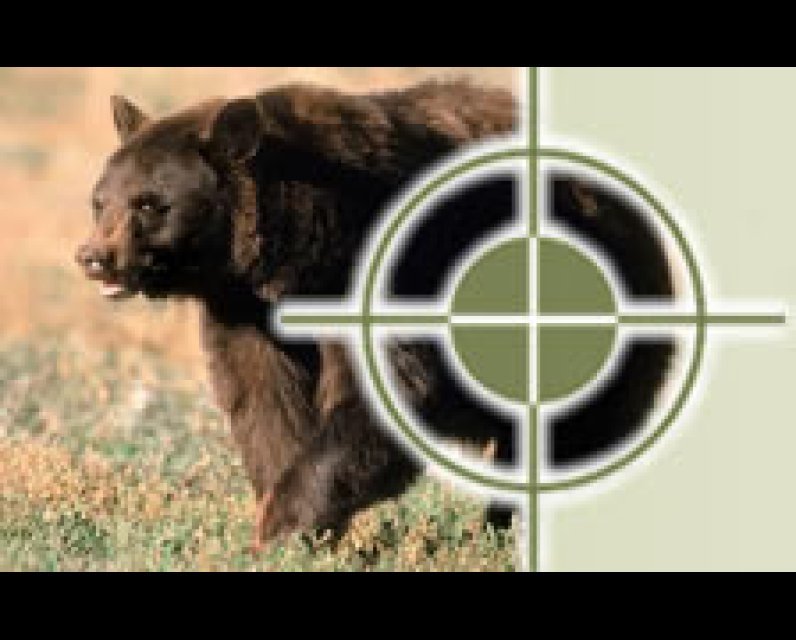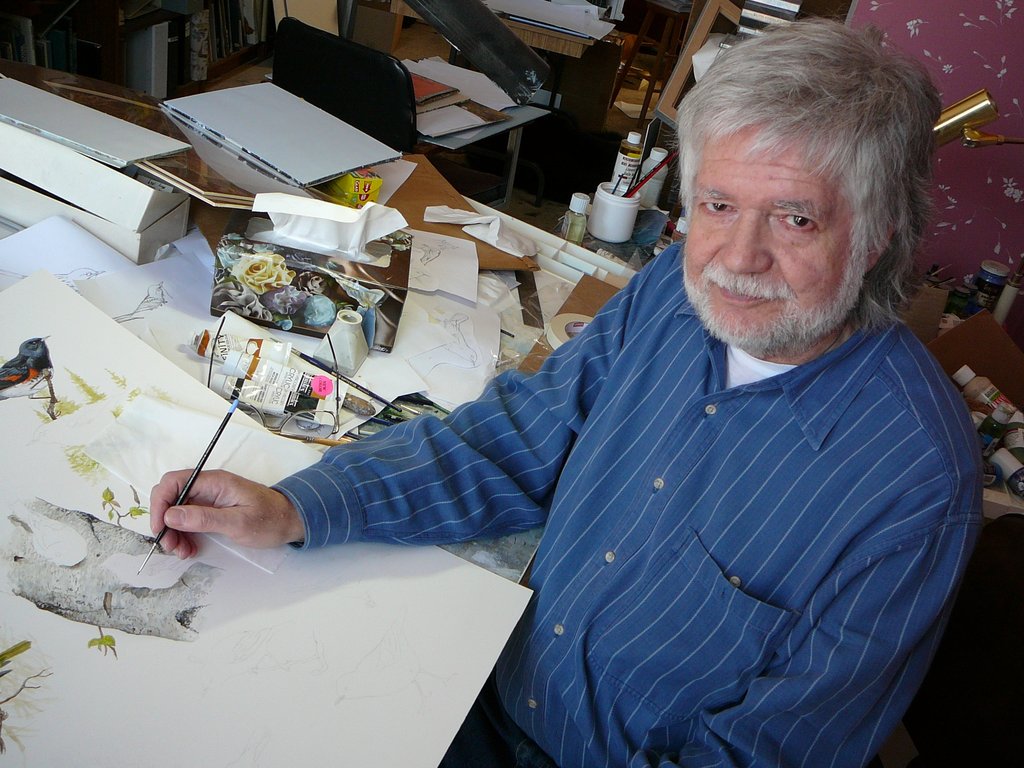Warning message
- Last import of users from Drupal Production environment ran more than 7 days ago. Import users by accessing /admin/config/live-importer/drupal-run
- Last import of nodes from Drupal Production environment ran more than 7 days ago. Import nodes by accessing /admin/config/live-importer/drupal-run
Unpublished Opinions
Barry Kent MacKay is the Canadian representative of Born Free USA, as well as a director of Animal Alliance of Canada, Zoocheck, Species Survival Network, an experienced naturalist, conservationist and animal protectionist, and a bird artist and illustrator, and has written and illustrated for numerous publications.
Kathleen Wynn's Christmas gift: A slow death to bear cubs

This Op-Ed was previously published in Born Free USA: http://www.bornfreeusa.org/weblog_canada.php?p=4000&more=1
As bears give birth, guess what’s waiting for them…
Okay, I admit it; I was fooled. When the Premier of Ontario and leader of the Liberal Party, Dalton McGuinty, suddenly quit office in 2012, amid various spending scandals, he was replaced by Kathleen Wynn, and since she was a bit of an outsider – Ontario’s first female premier, first openly gay premier – I tended to believe, or hope, things would be different and that transparency and citizen democracy would benefit, and policy would derive from logic and compassion.
Nope.
Prior to 1999, in addition to a fall hunt, which now starts in mid-August and ends in November, it was legal in Ontario to hunt black bears in the spring, attracting them to bait or hunting them down with dogs. Most bear hunters came from the States, some from Europe, wanting trophies. Such non-residents had to hire local “outfitters”, or guides. Bait, often sweet pastry and fats, would be placed in front of blinds or tree stands, and the bears, ravenous from winter months in their dens without food, would approach, and find tasty food, get used to the smells of humans, and thus by the time the clients arrived, were easy targets. Although many local hunters are disdainful of the practice, they usually remained silent because it brought money into the more remote, northern areas at a time when other tourist attractants – fishing, water sports, fall hunting, skiing and so on – were out of season.
Hunters were only supposed to shoot males, but too often they shot females. It’s rare to be able to see a bear’s genitals or lactating teats, and mother bears approaching a food source where there may be other bears, send their cubs to hide in trees before approaching the bait. The Ministry of Natural Resources (MNR) estimated, from the number of females shot, that an average of over 270 cubs were orphaned each spring. Young cubs are dependent on their mothers. When orphaned they would die from predation or slowly starve to death, or be killed by predators. A very few were found alive and brought to wildlife rehabbers, but most simply died unseen, lost in the bush.
While I know there are people not bothered by orphaned starving bear cubs, others are, and were able to convince the Ontario government to end the spring hunt. The fall hunt was extended, and the overall number of bears killed by hunters was nearly the same as before.
The Ontario Federation of Anglers and Hunters (OFAH) was outraged and started a massive campaign of bear reporting while making wild claims about huge bear number increases. Meanwhile, in 2003 a “Nuisance Bear Review Committee” recommended that the MNR take a lead role in responding to “nuisance” bear reports, including threats to human safety. Thus was born the MNR’s Bear Wise programme, which responded to individual bear concerns with a degree of competence and expertise not possessed by police forces or civilians, with much of their work directed toward preventing potentially risky (for bears or people) encounters in the first place.
Although the programme was successful, OFAH continues to claim it was not. There was, on average, no increase in conflicts between humans and bears, beyond the variables equally experienced when there was a spring hunt – bears are most likely to seek food from gardens, bird feeders, barbecues and garbage, thus becoming of concern to people – when natural food sources are delayed or diminished by atypical weather. Nor, again on average, was there increases of attacks on humans by bears, or in the size of the bear population, but OFAH and others unconcerned about those orphaned cubs were able to create the illusion that somehow there was a massive increase in all these things. The campaign also pushed a very emotive button among people in northern and central Ontario, that the government was more responsive to the concerns of the larger population of citizens living in the more urbanized south, where bears are rare or absent, but votes are numerous.
In 2008 then Minister of Natural Resources, Donna Cansfield, wisely ordered an assessment of Bear Wise. Published in January, 2009, it presented literally dozens of suggestions, based on its early work, on how it could improve. It was not unlike similar programs in play or planned for other regions, such as British Columbia and New Jersey. The next year McGuinty removed Cansfield as the Minister.
In 2011, with an election approaching, McGuinty cancelled plans to build gas plants to generate electricity, plans that had previously been agreed upon by all parties, when it became evident that local opposition to the plants might cost enough votes for him to lose the election.
Bad move. It cost us taxpayers, the Liberals admitted, nearly two hundred million dollars.
Ouch.
In May, 2012, McGuinty quietly, and without consultation, conducted a massive scale-back of the Bear Wise Program.
Then, in October, he abruptly quit, handing leadership of the party, thus the province, to Kathleen Wynne.
And what did she do? We were promised better, more open and transparent government. But instead, last July, her government exempted forestry and mining companies from compliance to the provincial Endangered Species Act. On November 6 the Environmental Commissioner of Ontario, Gord Miller, issued a scathing report. He said of the decision, “The full protections of the law no longer apply to activities such as forestry operations, aggregate pits and quarries, hydro-electric dams and infrastructure construction – activities that historically contributed to species becoming threatened in the first place.” A wide range of environmentalists were, and are, similarly outraged.
Let’s backtrack a little. A few years ago the Ontario Ministry of Natural Resources (MNR) formed something called the Human-Wildlife Conflict Advisory Group, to advise on matters of human-wildlife conflict. I wanted to join at the time, but impending surgery prevented it. As I recovered I began attending their meetings as a guest, and finally, last June, was accepted as a full member. Was even that panel, which is certainly replete with hunters, trappers, wildlife managers and an OFAH representative, even consulted?
Nope.
The Liberal Party has already downloaded responsibility for control of “fur-bearers” to the municipal level, and bears are legislatively classified as fur-bearers. That means that municipalities can order a “nuisance” bear to be trapped or shot (if the bylaws allow it) without worrying whether there are subsequent conservation or environmental concerns. Of course, they also are responsible for the costs, previously subsidized by all of us. They have, in short, been played for fools; the spring hunt does not target the bears that worry people, it targets any bear, meanwhile teaching them that us humans are good food sources.
I could go on. For example, under Wynn’s blood-stained watch we’ve seen increases in deer culling. And while the decision to allow the hunting of mourning doves in Ontario for the first time since the 1950s was federal, Wynn was seen as raising no finger to stop it.
But getting back to bears, here’s the irony. Apart from the sad fact that people in the north seem to believe there are more bears and more conflicts, neither contentions supported by the MNR’s own research, there is simply no way that shooting bears attracted to baits in the bush will mean that the same bear that might concern humans later on is the one shot. Shooting, itself, creates the risk of wounding bears, which can become aggressive. Contrary to myth, bears tend to avoid humans, and even if you approach their cubs, although not recommended, the moms will not attack. But teaching them that humans and the food we provide is available to them conditions them to search for such foods where people are to be found, thus, ironically exacerbating the problems that concern people.
The idea is to “test” the theory that the spring bear hunt resolves concerns by allowing hunting in a series of communities in northern Ontario, who agreed to the idea in secrecy and without bothering to educate themselves as to the facts or consult with the voting rabble. This way, southern votes may not be quite so at risk as we unrealistic, Yogi-loving city slickers can be told this is “only” a test.
Even more alarming, if possible, is a private member’s bill that, as I write, has had two readings, and is designed to reinstate the hunt overall, an act that will cause hundreds of cubs to die of starvation each year. If an election is called soon, it will be terminated, if not, it poses an even greater risk to bears and the cubs now being born.
This situation unfolded as we approached Christmas. Female black bears were in their dens. They were not truly hibernating, but their metabolism has slowed, and they are, and in the first weeks of the New Year, giving birth to tiny blind and toothless cubs who will find their own way to the rich mother’s milk that allows them to live and grow, slowly at first, then more rapidly. By the time she arouses and leaves the den, the cubs weigh about 3 to 5 kg (6 1/2 to 11 pounds), but at a huge cost to the mother’s own bodily reserves, and she becomes famished. She has an incredible sense of smell, 2100 times better than ours, or seven times better than that of a bloodhound. Smelling the bait, she will move in, but before coming into view, will tell her cubs to hide. She’ll get used to eating there. She won’t see the hidden hunter hidden, assassin-like, in a blind. If she’s lucky, she’ll be recognized as a female, and spared. But since she looks, from the hunter’s perspective, like a male, she may well be shot, and then her cubs are doomed.
And why? I have no doubt Kathleen Wynn thinks that by making it a “test”, and restricting the spring hunt to several communities, and to Ontario, not foreign, hunters, she will not arise too much criticism from compassionate voters, while placating those northerners angry at cancellation of the spring hunt back in 1999. After all, what are a few hundred baby bears starving when there are votes to be had?



Comments
Be the first to comment